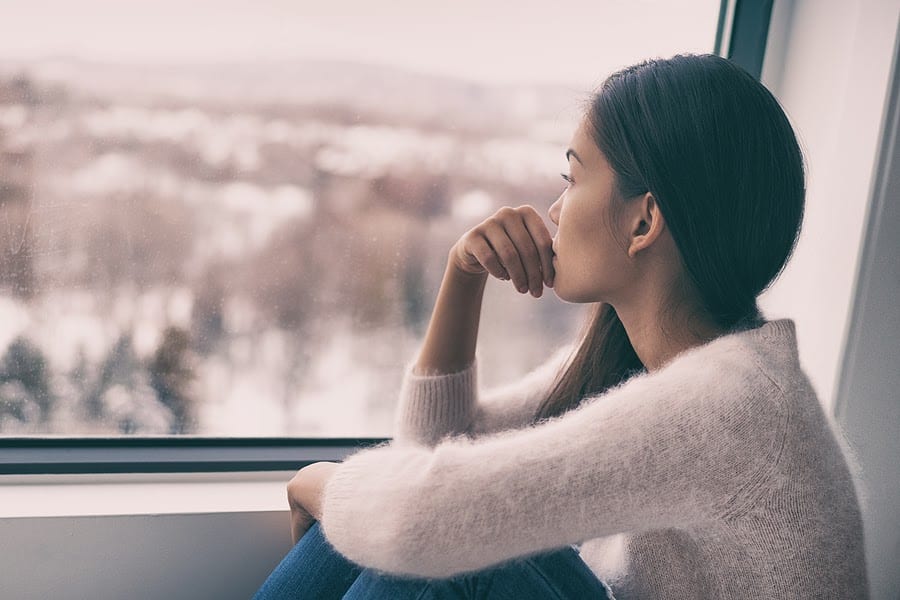It’s already late Autumn, and winter is quickly on its way with shorter days and colder temperatures. If the changing seasons are enough to decrease your energy levels and make you feel blue, you may be experiencing classic symptoms of seasonal affective disorder (SAD), a type of clinical depression caused by changes in daylight and weather that usually occur in winter.
Why is it that some individuals get SAD? Research isn’t completely clear, but some experts think that those seasonal changes disturb the body’s circadian rhythm, the internal 24-hour clock that regulates how people function during sleeping and waking hours. This regulation is what helps make our bodies feel energized and alert some of the time and drowsy during others. The great news is that there are natural ways to treat SAD that can come in handy during the incoming cold months (and beyond). Let’s take a closer look at what Seasonal Affective Disorder is and how to treat it naturally.
What is Seasonal Affective Disorder?
For most individuals, symptoms of SAD begin sometime in Autumn and stick around through winter. The most severe symptoms usually happen in December, January, and February, and a common symptom of SAD is that it starts and ends approximately at the same time every year. While rarer, some people start experiencing symptoms of SAD in the spring that continues through the summer.
The concrete causes of Seasonal Affective Disorder are not yet known, but one factor may be not getting enough sunlight. Sun deprivation may disrupt your internal clock and cause a drop in serotonin or an alteration in melatonin levels. For instance, melatonin is a chemical in the brain that impacts your mood, and it’s produced at a higher level in the dark, so when the days become shorter the production is increased.
Women experience SAD more commonly than men, and usually between the ages of 15 and 55. Individuals with the disorder also often have family members who also deal with SAD, are clinically depressed, have bipolar disorder, or live very far from the equator.
Luckily for those suffering from SAD, there are several things one can do to naturally and effectively fight seasonal depression this winter.
Dedicated Lighting
Even in the dead of winter, there’s often sunny days with plenty of direct light. Opening your home’s blinds, removing any branches that block sunlight, and lounging closer to bright windows are all convenient ways to improve Seasonal Affective Disorder and your mood with exposure to natural lighting.
Enjoy the Outdoors
It has been shown that spending time outside, even when it’s cold, can help with SAD symptoms. Enjoying a brisk walk within the first two hours of when you wake up is a fantastic way to get your share of fresh air and light, even if it’s overcast. Natural light is a lot better for treatment than artificial light.
Socialize with Friends & Family
Getting together with old friends, challenging yourself with a new class, or becoming part of a support group can all help mitigate the symptoms of Seasonal Affective Disorder. Reconnecting with friends or enjoying the company of new ones will help you to feel less alone and more purposeful during the winter months.
Commit to a Schedule
Creating and committing to a schedule will help your body get more sleep. With scheduled times each day, you can also plan to get planned amounts of sunlight at the best times that are convenient for you. Eating at regularly-recurring times will also help you manage how much and what you want to eat.
Work Out
Excise is great for both the body and the mind. Physical activity helps reduce stress and anxiety, both of which can make SAD even worse. Getting fitter and stronger can also help with self-esteem, which can push back against depressive feelings.
While seasonal depression may not last forever, it doesn’t mean it isn’t worth treating or that the symptoms can’t be severe. Many people experience SAD every year, but if your feelings of depression last more than one season, it could be a good time to talk to your doctor.
To learn more about professional mental health resources and techniques to treat seasonal depression, get in touch with us today. We’re proud to say our facility is one of the first TMS centers in the area and one of the most experienced across the whole east coast. Our friendly and expert staff are dedicated to helping you!

